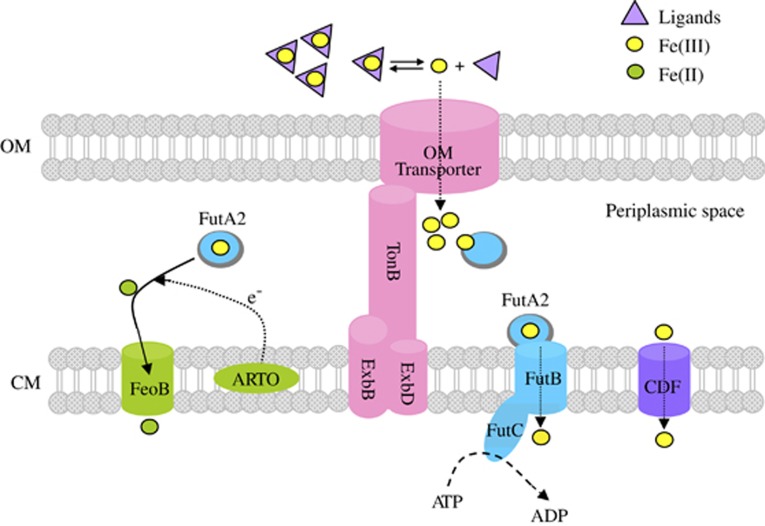Figure 5.
Iron uptake pathway model for Synechocystis sp. PCC 6803. In oxygenic aquatic environments, iron exists primarily in organic complexes that increase the solubility of dissolved iron and buffer an extraordinarily low concentration of Fe′. Synechocystis cells efficiently sequester Fe(III) that in equilibrium with the organically complexed Fe pool through active transport via TonB-ExbB-ExbD-dependent transport system. Outer membrane (OM) transport of siderophore-Fe is also under control with the TonB-ExbB-ExbD-dependent transport system despite its low rate. Once Fe(III) crosses the OM, it is probably bound to periplasmic protein FutA2 and then reduced to Fe(II) by a reductive iron uptake pathway (Kranzler et al., 2014). Immediately, Fe(II) could be transported into CM by CM-located FeoB transporter. As the half-life of Fe(II) is very short, Fe(III) will be transported into CM by an ATP-binding cassette transporter FutB and FutC. The cation diffusion facilitator protein (CDF) will improve the Fe(III) transport across CM when cells were under iron deficiency (Jiang et al., 2012).

